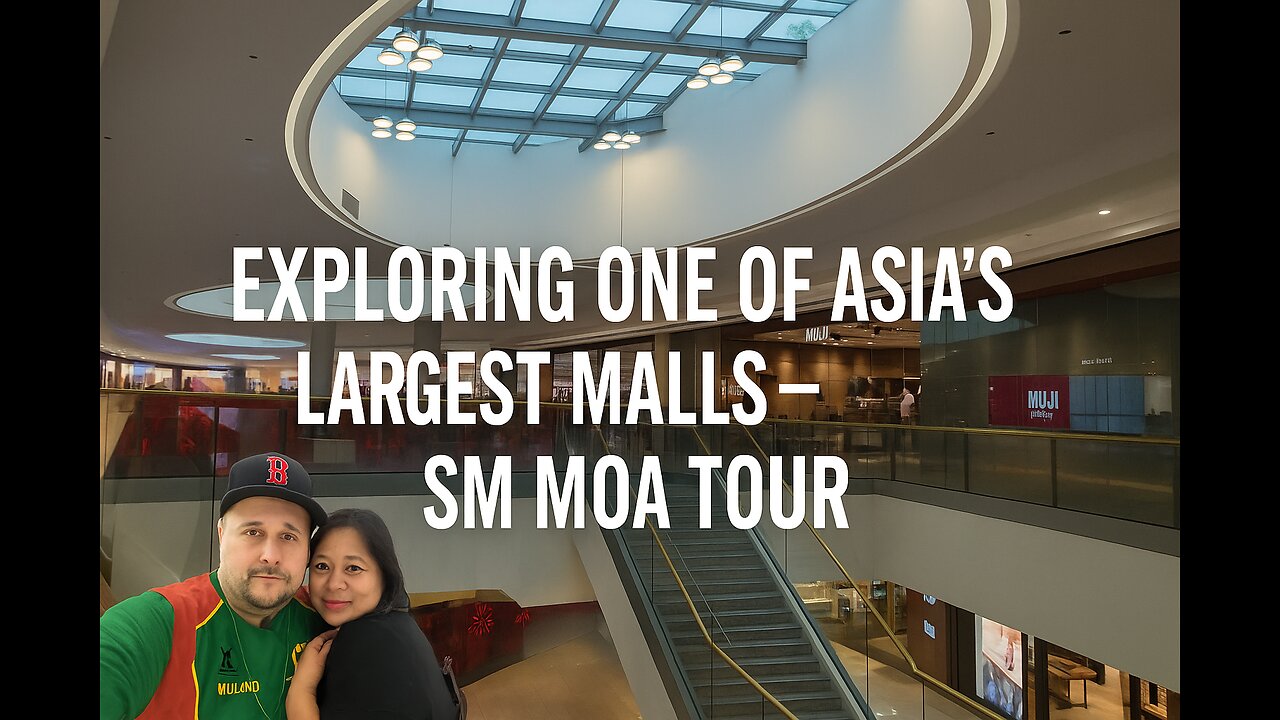Premium Only Content

SM Mall of Asia: A Symbol of Filipino Progress and Global Ambition
SM Mall of Asia: A Symbol of Filipino Progress and Global Ambition
History and Origins
The SM Mall of Asia (MOA), located in Bay City, Pasay, Metro Manila, officially opened its doors to the public on May 21, 2006. It was developed by SM Prime Holdings, the largest mall operator in the Philippines and part of the SM Group owned by Henry Sy, a Chinese-Filipino tycoon who played a pivotal role in shaping the Philippine retail landscape.
Conceived as more than just a shopping center, the Mall of Asia was envisioned as a world-class lifestyle destination that would elevate Philippine retail to international standards. Upon its opening, it was the largest mall in the Philippines and among the top 10 biggest malls in the world.
Architecture and Design
SM MOA was designed with a modern, ocean-inspired theme to reflect its proximity to Manila Bay. Its seaside location adds to its appeal, offering stunning sunsets and a cool sea breeze — something most malls can't boast.
Key features include:
Four main buildings: the Main Mall, Entertainment Mall, and two parking buildings, all interconnected by walkways.
A giant globe, officially known as the Globe of the Eye, located in the roundabout at the main entrance. It symbolizes global connectivity and modernization.
IMAX Theater: The first and one of the largest in Southeast Asia.
SM By the Bay: A leisure and dining strip that runs along the Manila Bay coastline, popular for its seaside ambiance and carnival attractions.
MOA Arena: A 20,000-seat indoor stadium that hosts international concerts, sporting events, and conventions — opened in 2012 as part of the larger Mall of Asia Complex.
SMX Convention Center: One of the Philippines’ largest convention venues, hosting trade expos, corporate functions, and major events.
The total floor area of the mall is over 600,000 square meters, making it one of the biggest in Asia even today.
-
 7:38
7:38
Mike Martins Channel
13 days ago $0.02 earnedThe $5 MILLION American Dream — Why Millennials Can’t Afford Life Anymore
146 -
 LIVE
LIVE
Dad Saves America
22 hours agoLeft Is Right, Up Is Down: The Overton Window Has Been Shattered
36 watching -
 LIVE
LIVE
LFA TV
17 hours agoBREAKING NEWS ALL DAY! | TUESDAY 9/30/25
1,345 watching -
 UPCOMING
UPCOMING
freecastle
5 hours agoTAKE UP YOUR CROSS- May the forces of evil become confused on the way to your house.
2402 -
 1:23:05
1:23:05
Awaken With JP
4 hours agoGetting NUTS! FBI Did J6, Comey Indicted, and More! - LIES ep 110
41.6K19 -
 LIVE
LIVE
Pop Culture Crisis
2 hours agoJK Rowling OBLITERATES Emma Watson, Trump Vs Ariana Grande, Could The Rock be President? | Ep. 926
699 watching -
 LIVE
LIVE
The HotSeat
1 hour agoCommander In Chief and SECWAR Address The Troops, and I AM HERE FOR IT!
879 watching -
![[Ep 759] Resist Digital ID | Dems to Shut Down Gov | Obama Library Funds Tides / Terrorists](https://1a-1791.com/video/fwe2/55/s8/1/8/U/L/m/8ULmz.0kob-small-Ep-759-Resist-Digital-ID-De.jpg) LIVE
LIVE
The Nunn Report - w/ Dan Nunn
2 hours ago[Ep 759] Resist Digital ID | Dems to Shut Down Gov | Obama Library Funds Tides / Terrorists
186 watching -
 1:42:33
1:42:33
The Quartering
5 hours agoFat Soldiers BLASTED, Kirk Assassin In Court, JK Rowling Destroys Emma Watson & Crowder Takes Risk
120K16 -
 1:17:12
1:17:12
Winston Marshall
3 hours agoExposing The EU’s Plot To Destroy Free Speech in America | Mike Benz
48.5K17